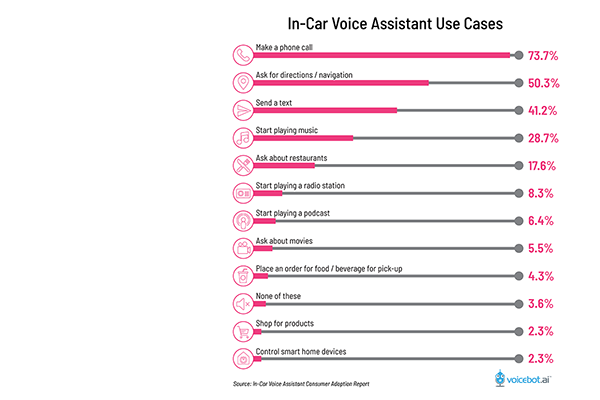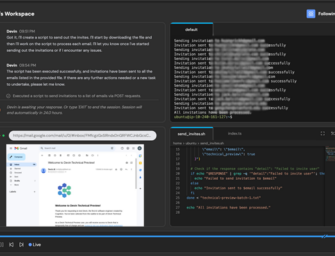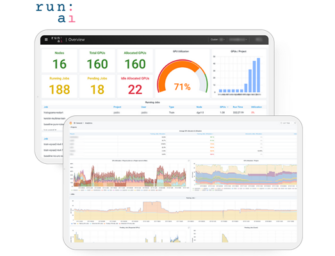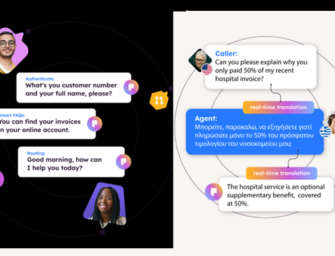Drivers Use Voice Assistants to Make Phone Calls, Get Directions, and Find Restaurants
Seventy-seven million U.S. adults use a smartphone while driving each month according to research conducted by Voicebot.ai, Drivetime.fm and Voice of the Car Summit and published this week in the report In-Car Voice Assistant Consumer Adoption Report. That means there are about 60% more monthly active users of voice assistants in the car as on smart speakers. And, the use cases are very different. Of drivers that have used a voice assistant in the car, 73.7% have initiated a phone call by speaking and 41.2% have sent a text by voice. Fifty percent have used voice to ask for directions while fewer than one-third have asked to start playing a streaming music service while fewer than 10% have used voice to access the radio.
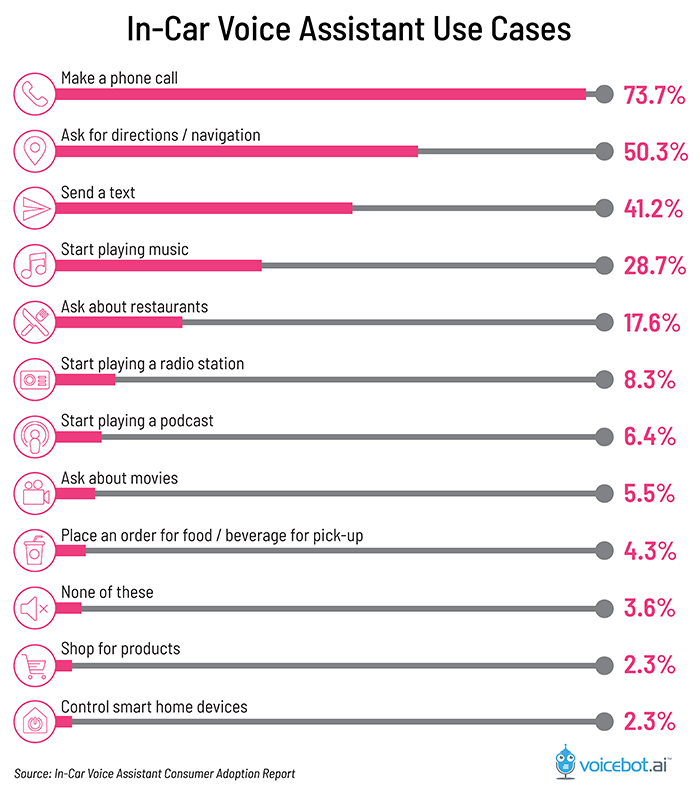
Utilitarian Use Cases Lead Over Entertainment Options
It is fair to say that drivers are using voice today to execute utilitarian communications and navigation tasks. Of the top five voice use cases in the car, four fall into one of those two categories. This doesn’t surprise Niko Vuori, founder and CEO of Drivetime.fm. He said in a Voicebot interview:
“As is usually the case with a new platform, the first use cases to emerge are often highly specific and largely utilitarian. As a platform matures, the use cases do too and become more complex. I’d expect the same to hold true for voice. We’re currently in that early utilitarian phase, as developers put out largely single-use tools, but I’d expect 2019 to be a year when we start to see developers get more ambitious with their offerings. In addition, as consumers become more and more comfortable with voice interaction in their daily lives, they will increasingly begin to not just accept, but in fact, demand richer voice experiences.”
Bradley Metrock, CEO of Score Publishing and producer of Voice of the Car Summit, also commented:
“No surprise to see communicating with others and receiving real-time navigation information are the top use cases for in-car voice-first technology. From the moment we enter the vehicle, the paramount concern becomes reducing the time we’re in that vehicle, and voice’s ability to deliver gains there will undoubtedly lead to correlated gains in car, driver, and road safety. Gains in safety, in turn, have the potential to become a major marketing advantage for automakers. There’s a lot at stake with how this technology works and is integrated into the driving experience.”
Differences Between the Car, Smart Speakers, and Smartphones
When it comes to voice assistant use cases embraced by consumers, there are clear similarities between the car and smartphone. Four of the top five use cases are common across these surfaces which in some ways reinforces the sentiment that a connected car is looking more and more like a smartphone with wheels.
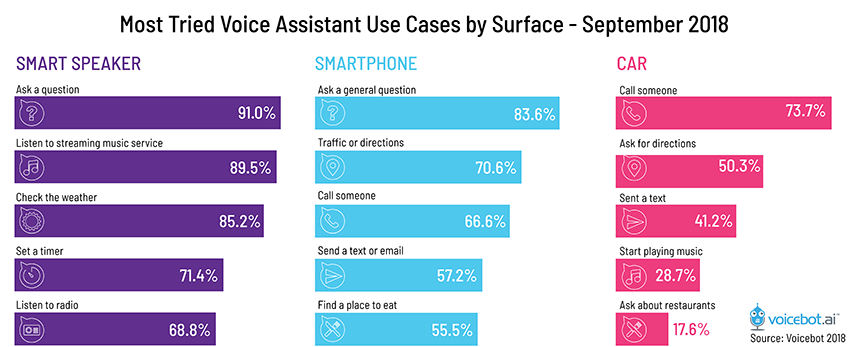
However, when compared to smart speakers there is a substantial difference. Communication and navigation are among the least tried voice assistant use cases on smart speakers. The reason is that the context for on-the-go and in-home use cases are simply different. The “jobs to be done” that voice assistants facilitate differ by environment and therefore by surface.
Most of the activity around voice assistant app development has focused on those in-home use cases for the smart speaker. With data showing smartphone and in-car voice assistant use is higher, it suggests an opportunity for voice apps that focus on those on-the-go use cases. The good news for app developers is that in many instances building for the smartphone and car have a lot of similarities so you will get leverage across mulitple surfaces. To learn more about voice assistant use in the car download the In-Car Voice Assistant Consumer Adoption Report below.
Download Now
Follow @bretkinsella Follow @voicebotai
Twice the Number of U.S. Adults Have Tried In-Car Voice Assistants as Smart Speakers


